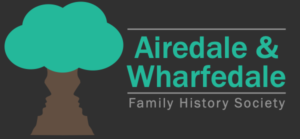Attendance Register Extracts 1889/90/91
Held at North Yorkshire Record Office at Northallerton
Catalogue Reference R/M/SET/2/7/16
Roll of Teachers on first page (no date)
E HAYES J SILVERWOOD
J A WARNES J WHAITE
J BARNETT M BINNS
R JOHNSON M ADAMS
C SEGGER M NEWHOUSE
A BURROUGHS A LEAWORTHY
J JEFFERYS A E BARNETT
S HUDSON Maria JOHNSON
S ADAMS Ellen WEST
Roll of Teachers Quarter Ending 29th September 1889
Emanuel HAYES Craven Terrace
Thomas MARSDEN Shed(?)
Robert DAVEY Langcliffe
John H WARNES Langcliffe
James BARNETT Langcliffe
Richard JOHNSON Langcliffe
Charles SEGGER Ribble Bank
John JEFFRIES Langcliffe
James WHAITES Langcliffe
William BINNS
John SILVERWOOD Langcliffe
John LOVE Langcliffe
Alf BURROUGHS
Lucy CAMM Langcliffe
Charlotte HUNT Langcliffe
Emily LOVE Bridge End Settle
Ann WHITLEY Langcliffe
Ellen LOVE Langcliffe
E J RODGERS Langcliffe
Mrs DAVEY
Bessie OPIE
Mrs H AIREY
N H BINNS
Attendances November 1890 to March 1891
1st Class 1st Class
T DIXON Super. Wm. WALKER super.
Frank BORDLEY Eliz. POOLE
John C WILSON Agnes LUND
John SMITHIES Hannah DICKINSON
Joshua MAUDSLEY Anne WILSON
Chris BROWN Eva HAWKSWORTH
Robert PATRICK Mrs HART
Jas. MIDDLETON Mrs FOSTER
Joseph HARPER Rose ELLERSHAW
Ed. METCALFE Eliz. E BROWN
Walter MARSDEN H MAUDSLEY
Frederic BUTT Mary Jane BOUSKILL
John LYNE M E HOLMES
Thomas CLOSE Margt. HARTLEY
Thomas ROBINSON Eliz. POOLE jun.
James WINSKILL Ellen LYNE
Alf MACDONALD Emily CONGDEN
Thomas BRADLEY Jane HOLMES
John AYRTON Mary SALISBURY
Mrs RALPH
2ND Class Anne WILSON
H V WALKER Sarah Jane HARTLEY
Jas. BULCOCK Ellen FRANKLAND
William GROVES Eliz. BLAMIRE
Jas. GROVES Anne HORNER
Douglas MARSDEN Mrs CLAPHAM
John Thos. LEEMING Eliz MARSDEN
John Wm. HART Mary LYNE
Wm. T WALKER Mary J THRELFALL
Victor MAUDSLEY Jane ELLERSHAW
Geo. Thos. POTTER Ellen HERRINGTON
Chas. GROVES Eliz. CRAGGS
3RD Class 2nd Class
Wm. DAWSON unreadable HARPER
Fred ROWE Eliz. POTTER
Thos. MARSDEN H HERRINGTON
Coates MARSDEN Dora MAUDSLEY
Allan ROBINSON Anne RALPH
Thos. HODGSON Isab. HART
W A CALVER Isab. HERRINGTON
Geo. CLOSE Sarah HARPER
Wm. IRVING Bessie ALTHAM
John Thos. —- Eliza M HART
William DICKINSON Edith HOGGARTH
George MACDONALD Mary KNOWLES
Mary HARVEY
4TH Class Lucy WARRICK
Robert BULCOCK Bessie LYNE
James KNOWLES Sarah BORDLEY
John POTTER Eliz. KIDD
W R WILKINSON Agnes Maud RALPH
Albert LYNE Alice BOLLAND
Henry CLARK
Wm. REDMAYNE 3rd Class
John WHITEHEAD J J PRESTON
Gerald MACDONALD A F DIXON
Nellie ALTHAM
5TH Class Ellen CHEETHAM
James KNIGHT Lily CLOSE
Joseph CRAVEN
Geo. F. GARLICK 4th Class
S. REDMAYNE S E SNELL
Wm. TOWLER Alice E WALKER
James BRADLEY Margt. HARPER
J.H.CALVER Susan LYNE
John IRVING Edith M DIXON
Geo. CHEETHAM Maud ALTHAM
Robert WHITEHEAD Gert. HARPER
Wm Robert SIMPSON Mary Jane BRADLEY
John DICKINSON Lily WINSKILL
6th Class 5th Class
Thos. WOOLF Nancy BATESON
John E MAUDSLEY Margt. GROVES
James R MAUDSLEY Jane A GROVES
Frank CLARK M E HODGSON
Thos. CLARK Anne THORPE
Walter BRADLEY Rose Mary THORPE
John BATTY
Samuel WINSKILL 6th Class
Chas. GARLICK Anne PATRICK
Harry FLETCHER Alice REDMAYNE
G C G PRESTON Mary TOWLER
Stephen BELL Ethel ALTHAM
John T CLARK Anne FLETCHER
Joseph WILSON Hetty FLETCHER
W T DIXON Nelly RASBURY (?)
J F WALKER M HETHERINGTON
Wilfred MARSDEN Maggie MACDONALD
Harry LYNE Florence GARLICK
Kenneth MARSDEN Edith Ellen DAY
Wm. WALKER Annie LEEMING
Herbert MACDONALD
